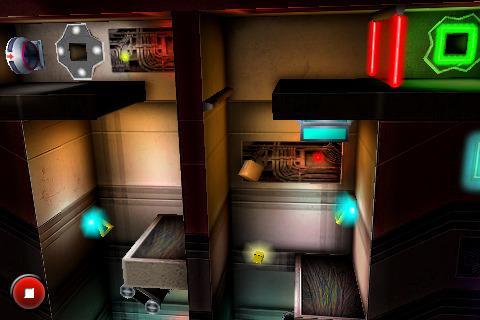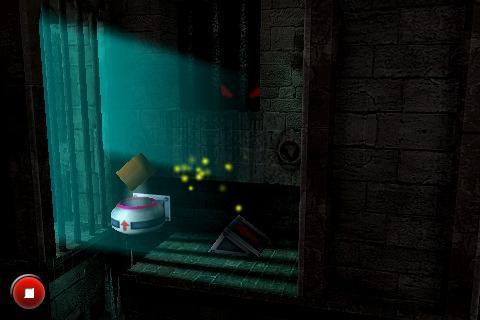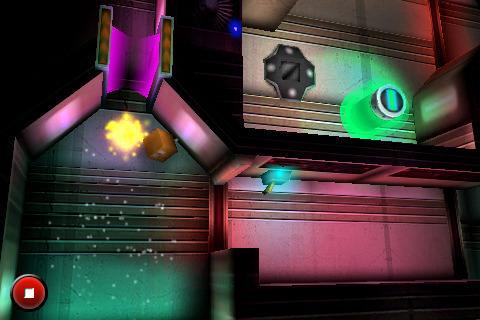- Wondering how to get Monopoly GO! free rolls? Well, you’ve come to the right place. In this guide, we provide you with a bunch of tips and tricks to get some free rolls for the hit new mobile game. We’ll …
Best Roblox Horror Games to Play Right Now – Updated Weekly
By Adele Wilson
Our Best Roblox Horror Games guide features the scariest and most creative experiences to play right now on the platform!The BEST Roblox Games of The Week – Games You Need To Play!
By Sho Roberts
Our feature shares our pick for the Best Roblox Games of the week! With our feature, we guarantee you'll find something new to play!Type Soul Clan Rarity Guide – All Legendary And Common Clans Listed!
By Nathan Ball
Wondering what your odds of rolling a particular Clan are? Wonder no more, with my handy Type Soul Clan Rarity guide.
The Package Review
There is something refreshingly honest about a video game that stands athwart any semblance of plot. There’s this package, see, and you need to get it through the factory using the tools available. That’s all you need to know in order to play the The Package; even the title itself does away with any false pretences of a storyline or embellishment. What is required of you in this flashy puzzle/mousetrap remix is a rudimentary understanding of physics and a working digit.

A thoughtful, well-realized diversion with a lot of style.
There is something refreshingly honest about a video game that stands athwart any semblance of plot. There’s this package, see, and you need to get it through the factory using the tools available. That’s all you need to know in order to play the The Package; even the title itself does away with any false pretences of a storyline or embellishment. What is required of you in this flashy puzzle/mousetrap remix is a rudimentary understanding of physics and a working digit.
First things first – this isn’t a game you can play on just any iPhone. Minimum requirements are the iPhone 3GS, which sports a faster processor and much stronger graphics potential than the initial iPhone models. Typically, most iPhone games actually run in a sort of emulated mode on the 3GS, mimicking the lesser graphics capabilities that are available to the plurality of Apple handsets. Developers Rock Pocket have drawn a sharp line in the sand and limited support to the 3GS only, and the results are evident. This has to be one of the most visually impressive 3D iPhone games I’ve ever seen.

The environments – 20 in all -are crisp and sharp, presented in horizontal mode as a 3D side-on view of the factory floor. Each level has an entrance and an exit. Pressing the small green play button will start the sequence, which at first will be a somewhat confusing sight of a simple box appearing at the entrance and dropping to the floor. When the box comes to a halt, the game pauses. It is in this pause mode that most of the actual puzzle-solving happens.
The top edge of the screen holds a toolbar button, which opens up your kit interface (or “widgets” as termed in the game). Each level affords you a very limited number of widgets, which the player must place in specific locations in order to facilitate the box’s journey from start to finish. These include things like directional fans, ramps, conveyer belt sections, and a box that “punches” a boxing glove when touched. While the game is rendered in 3D, it is actually more accurately termed 2.5D -all game play takes place on a two-dimensional game field, so there is no need to worry about depth. The 3D imagery is there for graphical flash, and to support a real physics engine, which is one of the stand-out features of The Package. There are no canned animations here; all physical interactions are calculated on the fly, providing a huge variety of outcomes and options.
After some experimentation, the behaviour of each of the widgets starts to become somewhat predictable, which enables the player to really start applying their problem-solving skills. The environments themselves are a big factor as well, often surprising with hidden trap doors, plungers, and elevators that must be taken into consideration. There’s a wonderful variation to these levels, progressing out of factory environments into stranger, high-tech surroundings with more interesting wrinkles to overcome.

The Package is not for the impatient. Each level has been meticulously designed, and a simple adjustment of one single element can sometimes cause a surprising amount of variation in the outcome. Testing and re-testing is the order of the day here, and there is no limit to how many times you can re-start the package sequence. It can at times become somewhat frustrating when you know you’ve figured out the pieces required for a level, but just can’t quite get the little box to obey. In fact, subsequent physics replays with untouched widgets are not always 100% consistent from cycle-to-cycle. As such, The Package is not always suited to quick-hit plays. Abandoning a level means you start from the beginning again.
Scoring is based on time, with bonus points awarded for players who manage to unravel the necessary widget placements in short order. Scores are local to your phone however, as there are no social hooks or online connectivity of any kind. The included tutorial level does a great job of walking through the various facets of the interface, including pinch-to-zoom (which looks really cool in 3D) and manipulation of the widgets.
The game’s soundtrack is a somewhat odd mixture of jazz and pop that doesn’t lend itself well to the looping exposure you’re sure to be subjected to as you work out the puzzles on each level. Annoyingly, you cannot disable the music while in-game; it can only be turned off from the main menu’s sparse Options screen. Queuing up an iPod soundtrack is recommended – the game lends itself particularly well to podcast-listening -but be sure to do so before you launch, as there are no in-app iPod music controls, apart from the usual Home button double-click trick.

One last note about the game’s 3GS nature -it eats battery faster than a lot of other titles. Not only that, but after an hour or so the phone actually started to become quite warm. This factor is something to consider should you happen to have a thick (or no) case for your iPhone.
The Package is a thoughtful, well-realized diversion with a lot of style. We hope to see additional level packs as in-app purchases in the future, as the game has lots of room to keep growing. For those lucky iPhone 3GS owners seeking a visually impressive straight-up puzzle game, we think The Package is a great choice.

The good

The bad
More articles...
Monopoly GO! Free Rolls – Links For Free Dice
By Glen Fox
Wondering how to get Monopoly GO! free rolls? Well, you’ve come to the right place. In this guide, we provide you with a bunch of tips and tricks to get some free rolls for the hit new mobile game. We’ll …Best Roblox Horror Games to Play Right Now – Updated Weekly
By Adele Wilson
Our Best Roblox Horror Games guide features the scariest and most creative experiences to play right now on the platform!The BEST Roblox Games of The Week – Games You Need To Play!
By Sho Roberts
Our feature shares our pick for the Best Roblox Games of the week! With our feature, we guarantee you'll find something new to play!Type Soul Clan Rarity Guide – All Legendary And Common Clans Listed!
By Nathan Ball
Wondering what your odds of rolling a particular Clan are? Wonder no more, with my handy Type Soul Clan Rarity guide.







